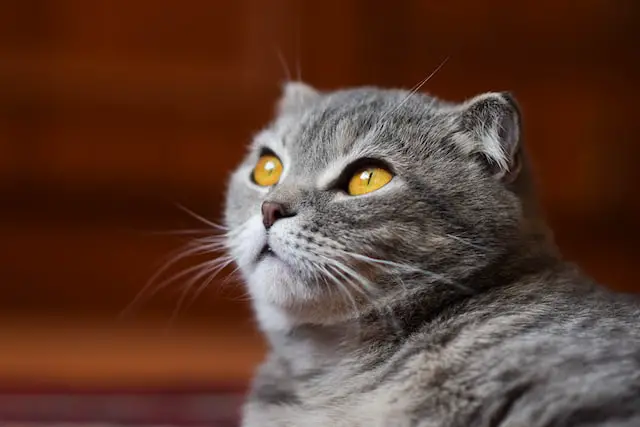Manx cats are unique felines known for their stumpy tail, or “bobtail.” Reports have been mixed regarding whether these cats have balance issues because of the lack of a tail.
The answer is not straightforward because some Manx cats experience difficulties due to their buoyancy.
On the other hand, many will make excellent strides in adapting and compensating over time with practice.
Veterinarians advise owners not to worry too much if their Manx has what appears to be balance issues early on, as it could very well be part of the adaptation they must make while learning how to adjust without a tail.
Do Manx cats have balance issues?
Manx cats have a unique physical characteristic known as a “bobtail.” This can be one of two types of tail length: a full bobtail due to the complete absence of a tail, or a rumpy, which is an abnormally short tail.
This lack of tail could lead to balance issues due to reduced weight and lessens the ability of cats to make quick turns or changes in direction when running.
It is recommended that owners provide plenty of jumping exercises for Manx cats inside the home so they can build their balance over time.
However, most Manx cats have adapted well, with no reported long-term balance issues.
Understanding cat balance
The first thing to understand is that balance is controlled by the vestibular system, which is located in the inner ear. The vestibular system sends signals to the brain about movement and orientation. The vestibular system needs to function correctly for a cat to maintain balance.
Potential Issue
One potential issue for Manx cats is that they may have an immature or undeveloped vestibular system. This can be because the Manx gene leads to a shortened spine, which may, in turn, lead to developmental issues in the inner ear.
As a result, some Manx cats may have difficulty maintaining their balance and may often appear “dizzy.”
How to help with balance
If your Manx cat is having trouble with its balance, there are a few things you can do to help. First, you should take your cat to the vet to rule out any other health issues causing the problem.
If there are no other underlying health issues, your vet may recommend a course of physical therapy or hydrotherapy to help your cat improve its balance and coordination.
You can also provide your cat with a safe place to rest and exercise, such as a Catio or an indoor climbing structure. With time and patience, your Manx cat should be able to improve its balance and live a happy and healthy life!
How do Manx cats balance?
Manx cats are known for their impressive balancing skills due in part to their taillessness. While other cats rely on their tails for counterbalance and stabilization, the Manx must use its hind legs differently to keep them upright.
The diameter of the hindquarters is more significant than most cats’, and this adaptation helps Manx cats keep their balance.
This is a genetic trait from Siamese cats, where longer back legs and a broader pelvis help maintain equilibrium – essential for jumping and keeping balance. By utilizing these adaptations, Manx cats are excellent jumpers and agile climbers!
Why have Manx cats evolved without tails?
The Manx cat is a unique breed most noticeably characterized by its lack of a tail. There have been arguments over the years as to why this trait has been selected over time, with researchers never able to produce a conclusive answer.
However, the prevailing theory from experts in the field suggests that it may be an evolutionary adaptation resulting from their environment on the Isle of Man nearly 1000 years ago.
This selection was advantageous for these cats because it gave them enhanced agility when maneuvering through dense undergrowth or rocky outcrops – allowing them to evade predators or hunt more effectively for prey.
Farms, too, had advantages as during times when food was scarce, these tailless cats were much better equipped at navigating tight spaces in search of food or vermin.
Whatever the reason, we can see that evolution and survival of Manx cats have been driven by selective breeding resulting in the unique breed we have today with charming personalities and singularly astounding taillessness!
Conclusion
Manx cats are unique creatures that don’t conform to the “normal” standards of feline anatomy. One of the most notable features of the Manx is its lack of a tail. While this may not seem like a big deal, it can lead to balance problems for these special cats.
If your Manx cat is having trouble with its balance, you can take steps to help, including taking them to see a vet or providing them with an indoor climbing structure where they can exercise safely. With time and patience, your Manx cat will be back on its feet in no time!
[su_box title=”Affiliate Disclosure”]This website is supported by its readers. Please assume that all links are affiliate links. If you make a purchase from one of the links we will make a commission from Amazon. Thank you.[/su_box]




